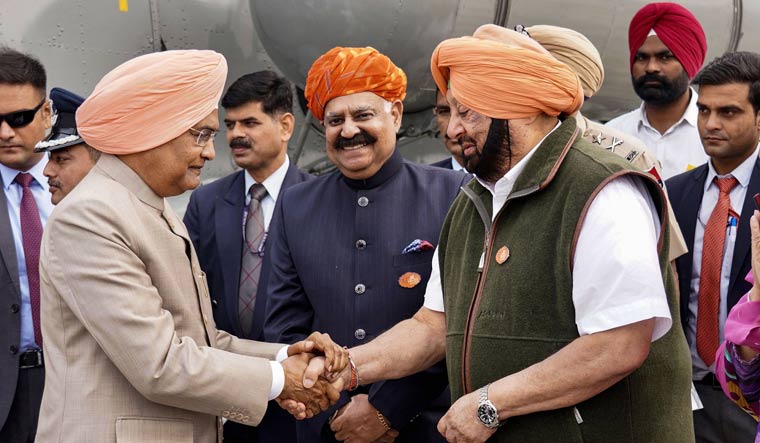While it is the Sikh community's dream, a germ of a seed in that direction appears to have been sown by Punjab Chief Minister Captain Amarinder Singh at Sultanpur Lodhi where he, along with President Ramnath Kovind, led the nation in celebrating Guru Nanak's 550th birth anniversary.
The chief minister raised the issue of Indian devotees getting access to more historic gurdwaras in Pakistan, as he addressed a rally in Sultanpur Lodhi on Tuesday. Knowing his role and its limitations, Singh did not make any appeal to Pakistan Prime Minister Imran Khan, but said he would take up the matter with Prime Minister Narendra Modi.
The Nanak Jayanthi celebrations are on till Gurpurab of 2020. Sources in Punjab say there is a good chance that the effort to gain access to Nankana Sahib may gather momentum well before that. Panja Sahib Gurdwara in Hasan Abdal in Pakistan, is also on his radar, for the impression of Nanak's hand is believed to be on a rock there.
The power with which the men of the BSF thump their boots as they shut the iron gates that divide the Attari-Wagah checkpost in Punjab after a ceremonial retreat daily, has been the best barometer of India-Pakistan relationship—real time. But regardless how violent the thumping, the chief minister of Punjab, who has no role in external affairs, has always kept one eye on Pakistan. It is not just the incumbent chief minister who has done so visibly, but also his predecessor and Akali Dal veteran, Parkash Singh Badal.
There is, after all, a Punjab on the other side of the border, with similar cuisine and culture, and the same spoken tongue. And above all, most of the gurdwaras and places associated with the Gurus, lie on the other side of the divide.
In an earlier tenure, the senior Congress leader had used his influence to facilitate the exchange of many delegations between the two Punjabs. Writers, women's groups, groups of media men and theatre troupes crossed the border from one country to the other in a display of the bonhomie that exists among the two peoples. Capt Singh even got a team of cricket veterans of Pakistan to come and play a friendly match with the veterans from India in Patiala. Visiting delegations were welcomed warmly and entertained lavishly.
The expectation then was that it would lead to an improved Indo-Pak climate. It did not happen, but that would never be a reason for Punjabis from India to snap ties with their Pakistani counterparts.
Parkash Singh Badal, as the chief minister, visited Punjab in Pakistan, at the invitation of his counterpart there. He walked back across the Attari checkpost, carrying with him a “dumbi”—a breed of goats from Pakistan.
Badal and Singh have had a role, as chief ministers, along with the SGPC, in facilitating the periodic pilgrimage of batches of Sikhs to Pakistan.
Buffering the free flow of Sikh pilgrims from India to Pakistan, and shielding that from the shadow of Indo-Pak relations, is something that every chief minister of Punjab wants. Equally, they have informally mentioned the idea of delinking the Samjhauta Express from Delhi to Lahore from the fragile bilateral ties, because the Mulsims of Malerkotla in Punjab have family across the border.
Whether Guru Nanak will open more doors after the Kartarpur corridor remains to be seen.



